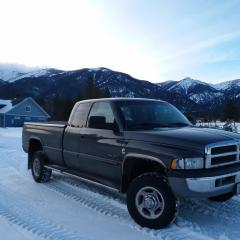- Replies 21
- Views 2.6k
- Created
- Last Reply
Top Posters In This Topic
-
Bob the Builder 6 posts
-
Mopar1973Man 5 posts
-
IBMobile 3 posts
-
Tractorman 2 posts
Most Popular Posts
-
@Bob the Builder, if the lift pump is still located in the factory position by the fuel filter housing, this means that the power supply for the lift pump is probably provided directly from the ECM.
-
The fuel pickup sits just off the bottom of the tank, so if full or at 1/8 the pump is always sucking off the bottom.
-
Biggest stand is the HFRR for the UK is <460 HFRR compared to US at ~520 HFRR. As stated worst case US fuel standard... Typical UK fuel...





Howdy all, looks like a great place.
Just got a 2001.5 2500 6 speed from my sister who had it since new, and my first Dodge diesel. 240,000 on the clock and seems all stock. So go figure drove it once to show a friend, parked it to put in fuel pressure, pyro and boost. Started it up to move it out of the shop - ran 10 ft and died. So the research is how I found this place. Had to join just to see how the rest of you are doing the deed and figure this thing out.